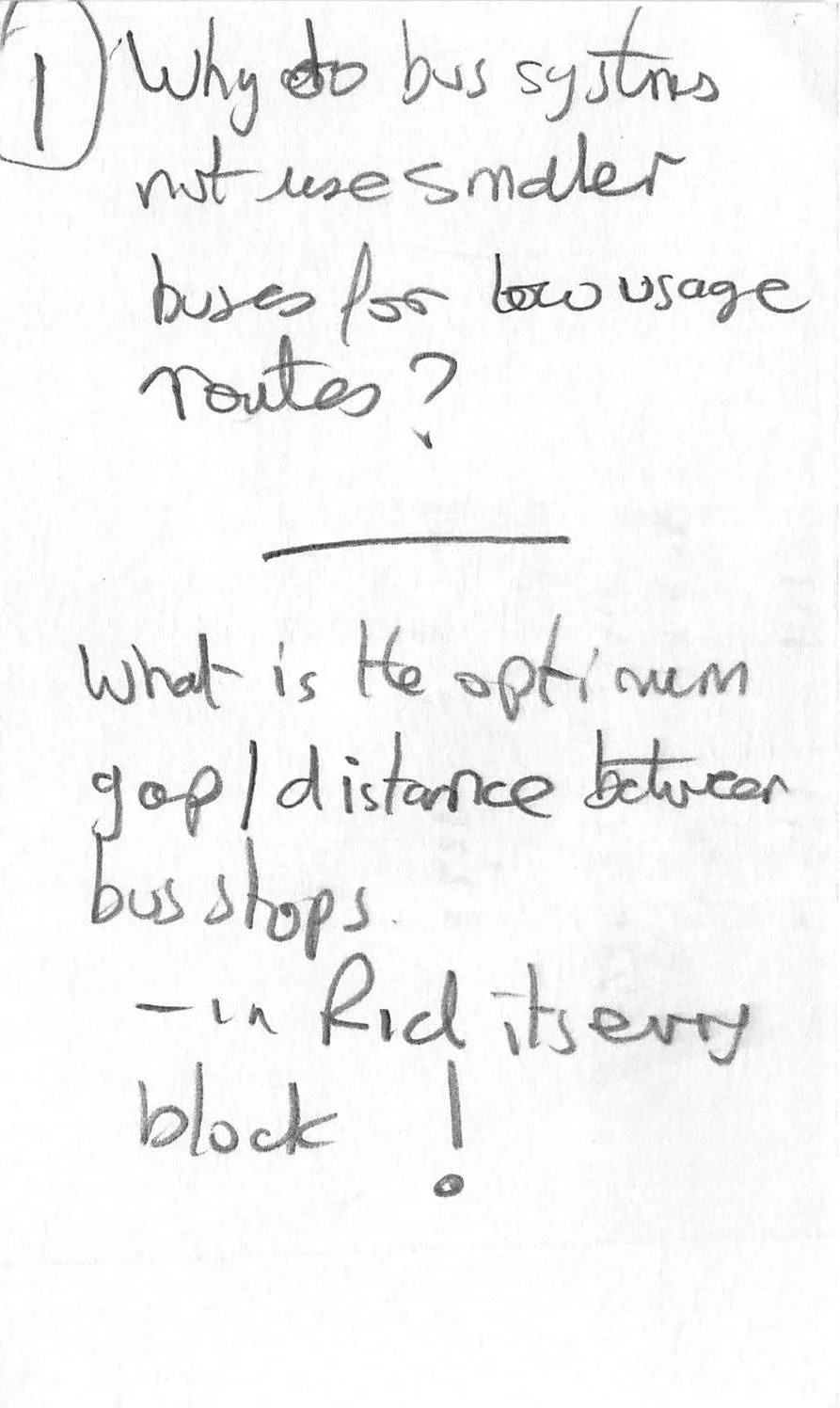Question: 1) Why do bus systems not use smaller buses for low-usage routes? 2) What is the optimum gap/distance between stops?
Nicholas: Using smaller buses doesn't usually reduce costs much and may actually cost more. Smaller buses are cheaper to buy but generally don't last as long, both in time and number of miles travelled, so they must be replaced more often. (If you can solve this problem, you can probably make a lot of money!) Smaller buses may use less fuel, but fuel is a minor cost compared to labor costs, including the driver and maintenance, which are usually the same regardless of the type of bus you have. Fairfax County found that the larger buses, which are about 3/4 of the buses in US public transit fleets, were cheaper over their entire lifespan.
Nicholas: Richmond recently started applying a five-stops-per-mile stop spacing policy. The main advantage of consolidating stops like this is that you eliminate much of the time a bus spends slowing down, opening doors, and accelerating. If you go from 20 stops with one person waiting at each to 10 stops with two people waiting at each, you save all that slow time and only add the extra second it takes to load the second passenger. Optimal stop spacing for buses is usually about a quarter mile, but varies depending on the street layout: Long blocks may have a stop at every cross street while short blocks at every third cross street.
However, this doesn't mean people have to walk a quarter mile extra to get to the closest bus stop! Imagine walking to Broad Street in downtown Richmond, an area with short blocks that could have stops every third cross street (at 3rd, 6th, 9th, etc). If you're coming on 3rd, 6th, or 9th, your bus stop is right there. If you're coming on 4th, 7th, or 10th, then you'll walk just one block west. If you're coming on 5th, 8th, or 11th, then you'll walk just one block east. At most you're walking one block extra, which might be just 300 ft (1/18th of a mile).
Of course, each situation is different, so if you have a large, popular destination you might want an additional stop. In areas with low ridership buses rarely stop, so stops can be more frequent.

